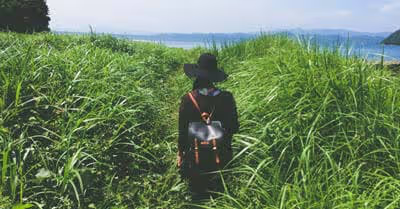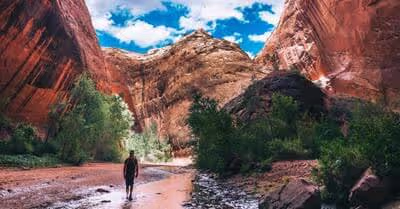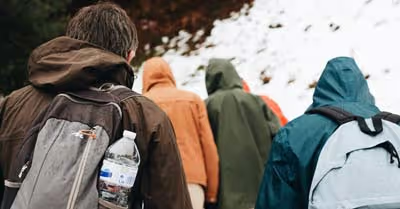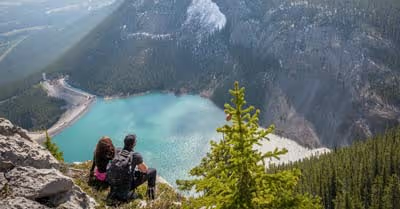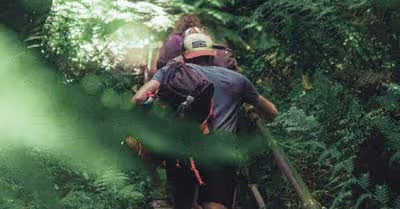Table of Contents
Why is it important to stay dry?
Staying dry when hiking is important to your comfort and your health above all. Being wet can lead to complications and issues that are completely avoidable if you know how to dress. But what can happen if you do get wet?
Comfort:
Being wet makes you colder. The way our bodies regulate our temperature is from our heat exchange with the environment around us. Simply, this means when the air is cold our body tells us we feel cold. And conversely, when it is warm outside our body tells us we feel warm. When we are in contact with water, we exchange our heat with that water and our body will almost always tell us that the water is colder than, us so we feel cold. This is why we sweat, to cool us down. It is the same process, except in this instance we are trying to avoid it as much as possible. When the air outside is very cold, and we are wet, the water is even colder than normal and causes us to in turn then feel even colder. It is best to avoid being wet all together for this reason.
Health and safety:
Being wet, and thus cold, has serious health and safety concerns for us too. Being wet makes you colder, as explained above, and can lead to illnesses such as colds and flu. There can even be more serious complications, such as getting pneumonia, or worse, frostbite. If you are only hiking a short distance, getting wet and cold will most likely lead to a cold. No more. It is only on the longer, all-day or multi-day walks, that the real problems can start to arise. The best way to avoid these health complications completely is by staying dry. To do that we need to know, how?
The best ways to stay dry:
Layers:
Layers keep the wet, and the cold, out. Multiple layers mean there is a better chance the water doesn’t make its way in. The best amount of layers is normally 3 to 4. One undershirt, one over-shirt, one fleece, and one jacket/coat. Having multiple layers is a good way of keeping water off of your skin, because it has so many stages of clothing it must make its way through. Even if you wear a raincoat, water will still make its way in with torrential rain. By putting up as many barriers between yourself and the elements as you can, you will be able to stay as dry as possible.
The reason the best amount is probably 3 or 4, is because many layers can make you very hot and very heavy. Overheating can be just as much of an issue as being very cold.
Waterproof jacket/coat:
Having a good waterproof jacket, or coat, is the most important layer. By having a jacket with the most movement possible allows you to be comfortable and leaves you with a full range of motions. Which is important when traveling over long distances. The jacket is the first line of defense and will protect you against most of the water. Jackets should always be hard shell where possible, with zips, not buttons.
Synthetic mid layers:
What your jacket doesn’t stop, should stop at your mid-layers. It is best to wear a synthetic fleece over a tight long-sleeved shirt. The synthetic fleece will keep its puffiness and keep water out much better than a traditional wool one, that will absorb the water in. Which is the opposite of what we are looking for. The tight, long-sleeved, overshirt will keep you and your undershirt dry.
Hardshell pants:
Hardshell pants are the equivalent waterproof item of clothing for your legs, they keep you warm and dry by letting the water simply just runoff. These pants can become heavy and cold over time as water pools on the outside. It is best to wear warm leggings, or long johns, underneath to prevent condensation on the inside. The absolute worst clothes you can wear on your legs are tracksuit pants, or jeans, as both hold water and become very heavy over time. Wearing these will make your legs absolutely freezing.
Hats and Gloves:
It is possible to buy waterproof gloves and waterproof beanies from common brands such as North Face, and you should. If your jacket has a hood, make sure you put your hood up over the beanie. Two layers of protection are better than one. It also means water doesn’t collect in your hood and eventually start to run down your back.
Gloves are very important too, wearing waterproof gloves keeps the water off your hands (obviously) but also helps stop it running down your wrists and arms. Tucking your long sleeve shirt into your gloves and fastening them tightly is a good way of making sure water cant enter into your jacket from your arms at all.
Hats and gloves are not just for keeping you dry, they also help keep you warm. A large amount of your body heat escapes through your hands. It is still being disputed whether or not it also leaves through the head.
Walking boots and socks:
Wearing the correct shoes and socks can be a lifesaver, literally. Your feet are one of the most likely places to get problems such as hypothermia. They are also the most likely place to get very wet, walking through puddles, or crossing small streams. One of the best ways of staying dry on the trail is by wearing waterproof walking boots. Doing so can save your feet from their almost otherwise guaranteed aches and pains. Water can still collect in your shoes from the runoff of your long pants. There are two ways to prevent this from being a problem.
First, tuck your leggings or long-johns into your thick socks, this will stop water from being able to make it in through the tops of your socks. Second, make sure your hardshell pants are over the tops of your walking boots all the way around. Some pants have fasteners to keep them in place. By doing this, when water runs off from your jacket and pants down towards your boots it will simply glide to the ground, not directly into your ankles.
Conclusion
The importance of keeping dry while hiking is something that cannot be overlooked. If you follow this guide of how to stay dry when hiking, you should have no trouble at all. Dress well, think ahead, and you will be able to overcome whatever mother nature throws at you. Good luck!
Recent Articles



